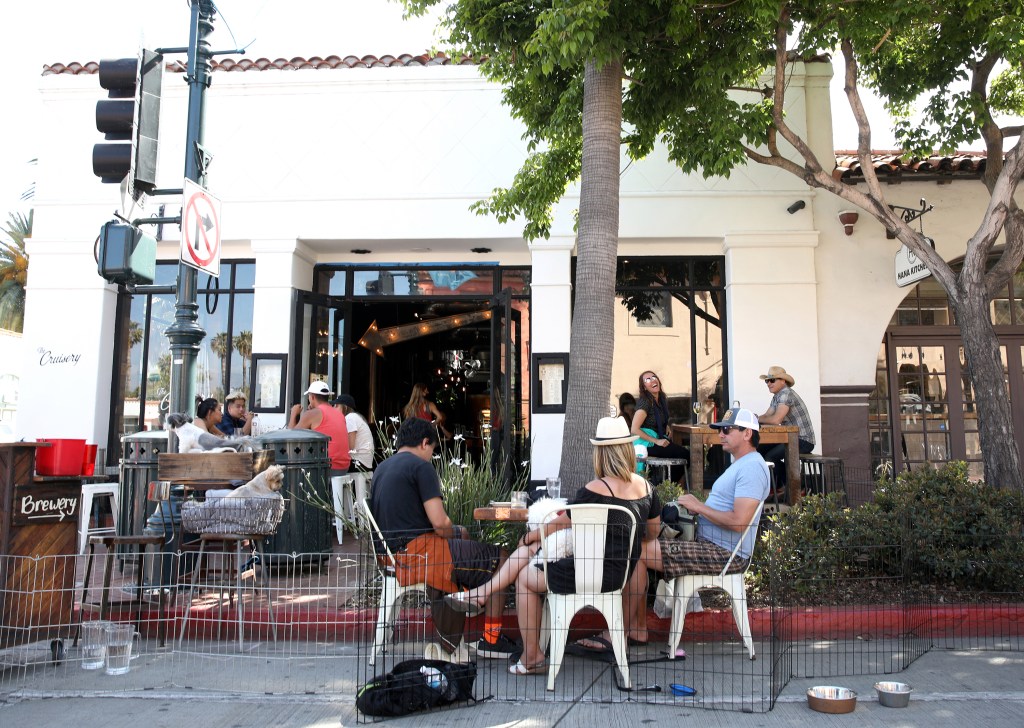State Street as we once knew it, the thriving retail heart of our city, is no more: time of death mid-March 2020. Our traditional walkable downtown, which had survived a devastating earthquake and outlasted the competition of suburban malls, each time adapting and improving on itself, was suddenly very different.
Downtown Santa Barbara at its core follows a colonial city plan developed and refined by the Spanish, originally for the purpose of conquering foreign territories. After the earthquake of 1925, local and imported visionaries were able to put into widespread practice “City Beautiful” ideas that had been percolating for decades elsewhere. Those changes shed the Victorian-era past and brought a consistency to downtown, making Santa Barbara the iconic place we know.
Get the top stories in your inbox by signing up for our daily newsletter, Indy Today.
When regional shopping malls became the rage, our city leaders resourcefully responded with redevelopment projects that added convenient parking, street improvements, and eventually an integrated anchor mall. The result of those enhancements was a vital corridor of activity that was more appealing than conventional malls. Over time this success brought on more success along with higher rents. What had once been a conventional downtown was increasingly a mall in disguise with restaurants, entertainment and offices, but very little housing. The traditional urban mix had been skewed.
Over time, online shopping has taken its toll on downtown. Businesses have closed and the level of activity has dropped off. The retail core was now too big to continue as is, but downtown was on a slow path downward, reluctant to adapt. The pandemic has provided the impetus for change. Finally, there is consensus that our path forward is to follow a more traditional urban direction with housing and taller buildings in the heart of downtown. These changes will alter the urban mix and support more activity through the addition of housing and local-serving businesses.
Changes of this magnitude take time, so how do we get there, successfully? Closing State Street has been a very successful way to adapt to the social-distancing requirements we currently face. It has restored activity where it was missing. What works in the summer or on a weekend though may not be enough to support a business through the winter or during the week. Pedestrian districts require a critical density of activity to thrive.
In 10 years or so, after new housing has been constructed and the mix of businesses has adapted, it would be wonderful to have sections of State Street dedicated to pedestrians similar to the city centers of Europe. In the ’60s and ’70s, communities all over Southern California closed off streets in an effort to compete with malls; most of them were unsuccessful due to a lack of activity. Places like Burbank and Montrose sought to reinvigorate their central business districts by adding landscaping improvements, but these had the opposite effect, disrupting sightlines and discouraging vitality.
The path forward revolves around encouraging activity of all kinds, block by block, month to month. New designs aren’t enough. What is needed is a flexible approach to design, policy and regulation that can adapt over time and encourage businesses to take the initiative to invest and attract customers.
Every day, the staff of the Santa Barbara Independent works hard to sort out truth from rumor and keep you informed of what’s happening across the entire Santa Barbara community. Now there’s a way to directly enable these efforts. Support the Independent by making a direct contribution or with a subscription to Indy+.

